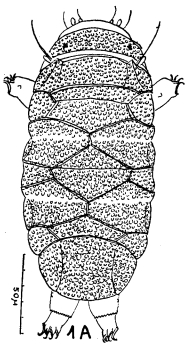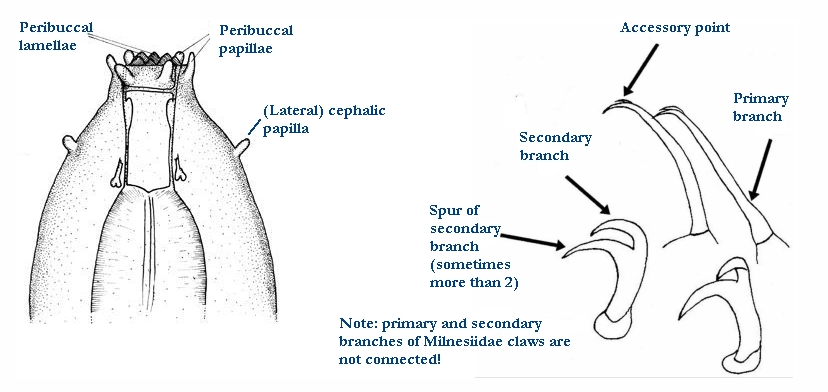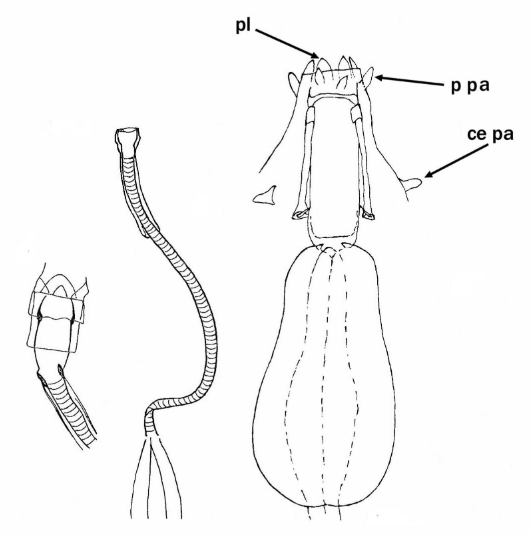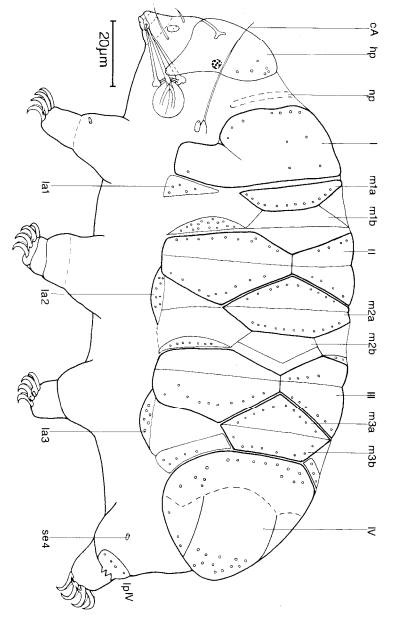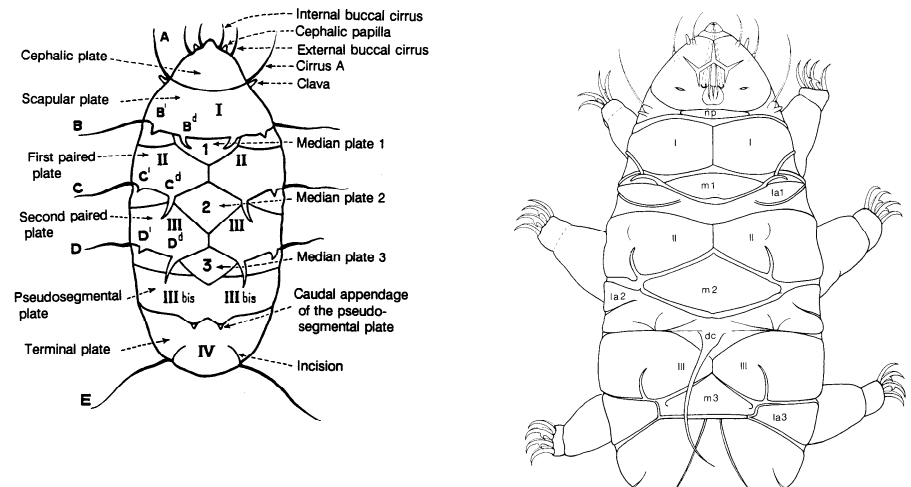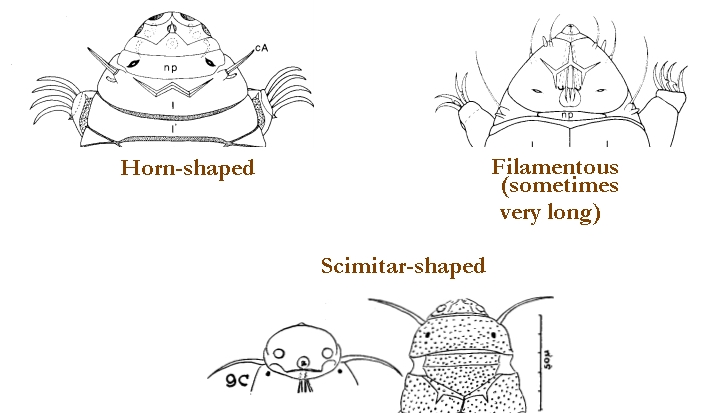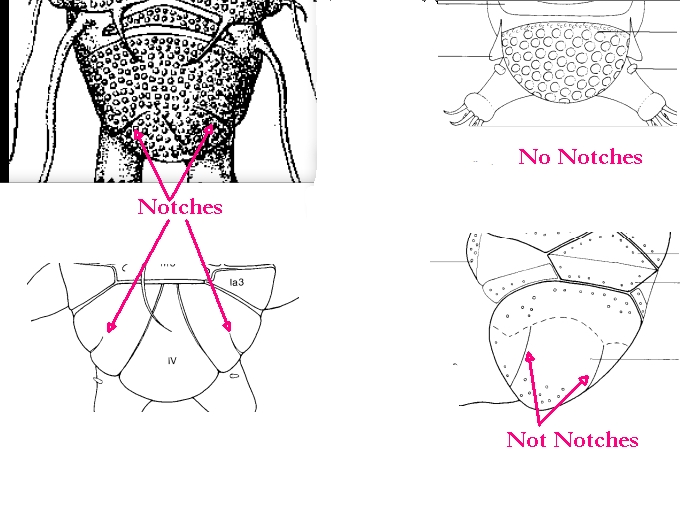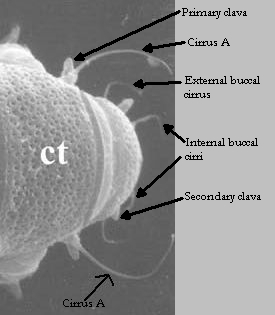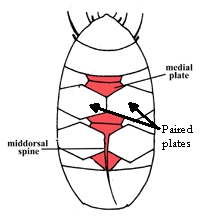From Ramazzotti & Maucci 1983 (tr. Beasley 1995): The median plates 1 and 2 are divided, not 3, so that there are visible total 5 median plates; lacking the notches on the terminal plate.
From Kristensen 1987: “Sparsely pigmented Echiniscidae with red granulae eyes, unflexible buccal tube with CaCO3 encrusted stylet supports. Median plates 1 and 2 divid- ed. Median plate 3 undivided with round to straight posterior margin. Without any form for pseudosegmentation. Ventral plates can be present.
Emended description: Ventral plates present in at least two species (B. sinensis and B. weglarskae). Moreover, indistinct ventral plates, especially two small genital plates, may be present in B. parvulas. (Note: the presence of the thin ventral plates can be overlooked in some species of Bryodelphax, if the prepara- tion is not polyvinyl—lactophenol). The dorsal plate has a finely punctuated cuti- cle (pillars present in the epicuticle) and light round area (depression in the cuticle). Dark granulation (elevations in the cuticle) is seen in a few species. The head and neck plates are indistinct. The scapular plate (I) is large, paired segmental plates II and III are often divided into an anterior and posterior part. Caudal plate (IV) without terminal indentation (notches), but two lateral eleva- tions or facets (pseudonotches) in the cuticle are present. Median plates 1 and 2 are divided into two parts, the median plate 3 is undivided, its posterior margin of median plate 3 is often beneath the caudal plate. The cephalic appendages consist of the Echiniscus-type with both primary and secondary clavae formed as straight, small papillae. The cirri are short and cirrophores were not seen. The male, which is the same size at the female, does not have enlarged clavae. Trunk cirri are absent. Sense organs present on legs I and IV. Leg plate may be absent on all legs, often present as a serrated collar only on leg IV. A character unique for the genus Bryodelphax is 10 small buccal papillae around the mouth opening. The buccal apparatus and claws are similar to those of Bryochoerus.”
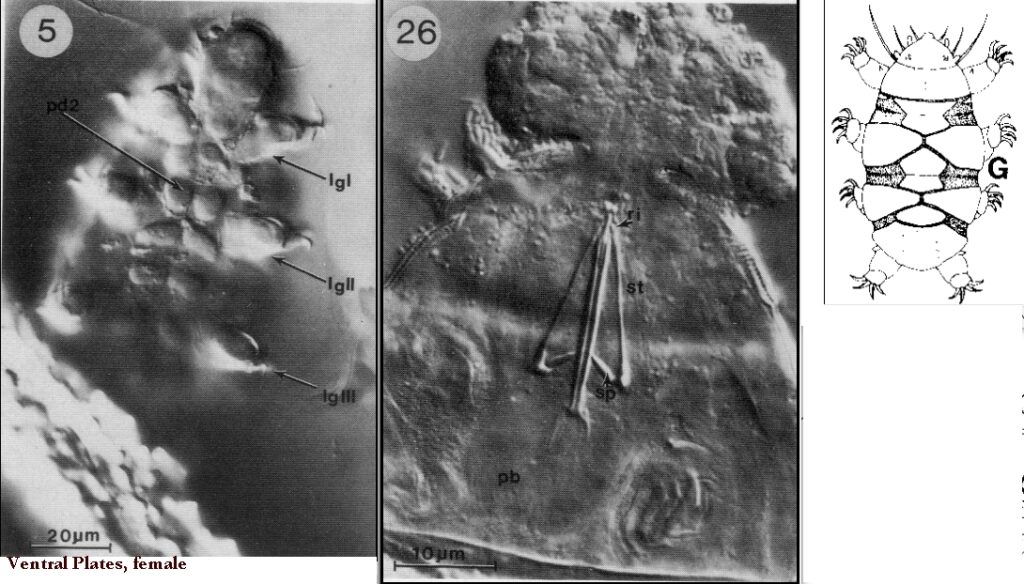
Citations:
Kristensen RM. 1987. Generic revision of the Echiniscidae (Heterotardigrada), with a discussion of the origin of the family. pp. 261-335 in Bertolani R (ed). Biology of Tardigrades: Selected symposia and monographs.
Ramazzotti G, Maucci W. 1983. Il phylum Tardigrada(III edizione riveduta e aggiornata). English translation by C. W. Beasley, 1995. Memorie dell’ Istituto Italiano di Idrobiologia 41: 1-1012.
